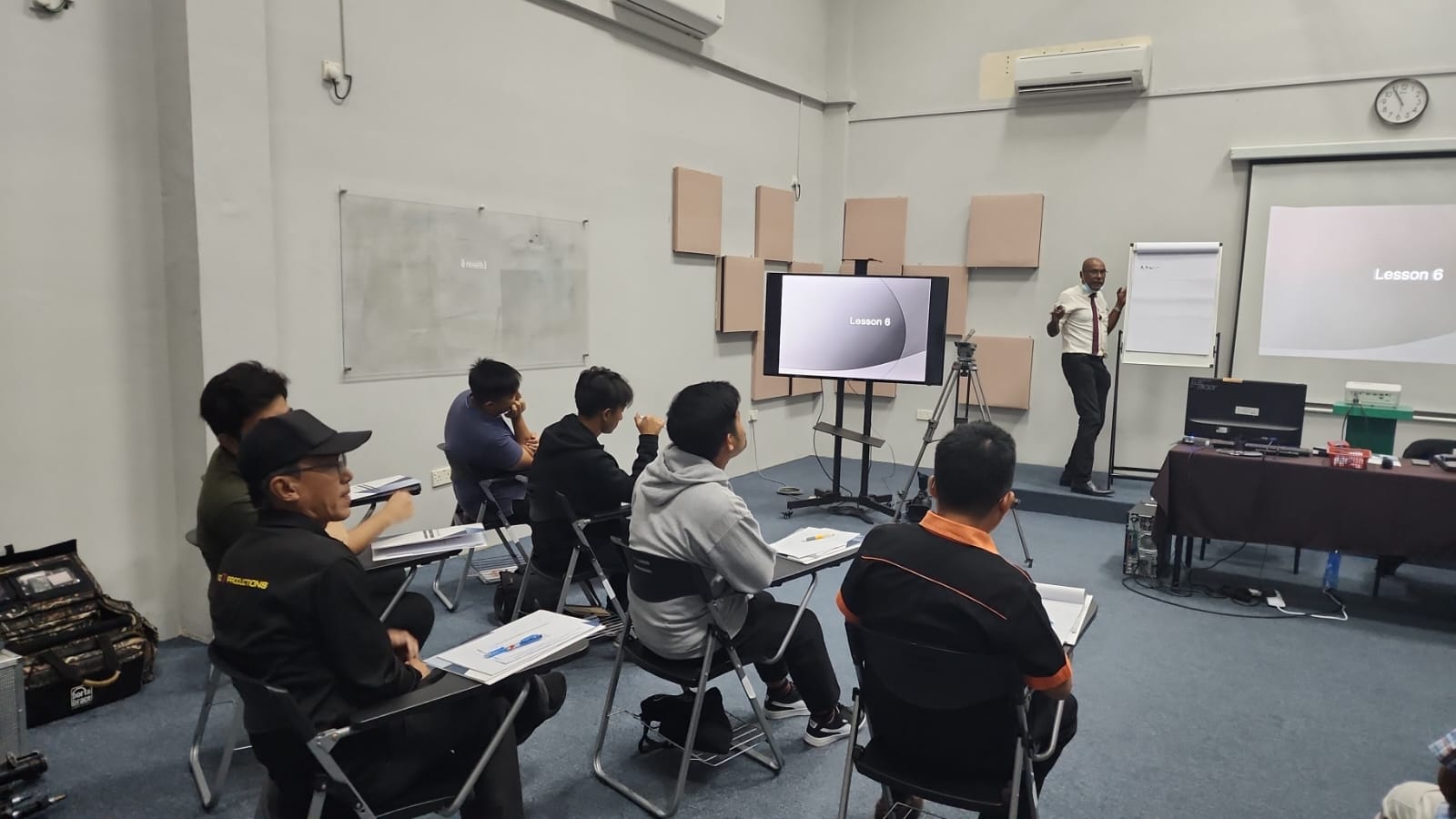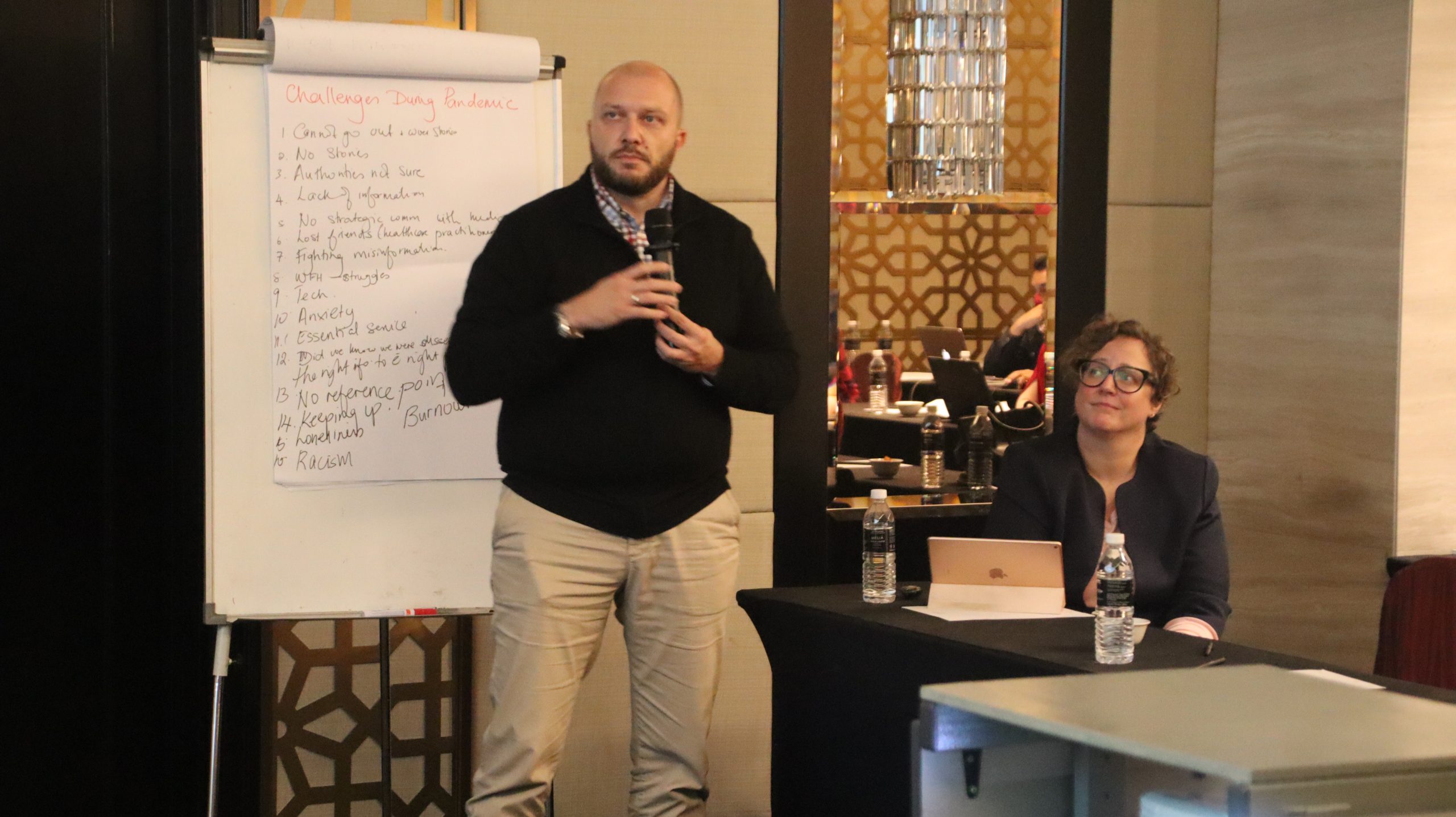On Thursday, December 1, 2022, the Asia-Pacific Institute for Broadcasting Development, in partnership with the Korea Communications Commission and the Korea Information Society Development Institute, hosted a day-long seminar on “The Future of Media.”
On behalf of KCC Director General Mr. Bae Jung Seob, Mr. Sungwong Kim, Associate Research Fellow at KISDI, and KCC Director Ms. Young Joo Kim, who joined AIBD Director Ms. Philomena Gnanapragasam to welcome all who attended,

A number of highly regarded experts, who both physically and virtually attended the event at the Hilton Kuala Lumpur Hotel, highlighted how new media in this digital age and cyber and digital security, as well as old media or mainstream media, can continue to be relevant.
The seminar highlighted both the ever-evolving new media and the transitions that old media, like broadcast, are embarking on to keep up with the times.
Philip Victor, Managing Director of Welchman Keen in Malaysia, spoke about media, cyber, and digital security and how to manage cyber and digital presence, including disinformation and misinformation.
“The important thing is that we are aware that the risks are there and we minimise those risks,’ said Victor.
The key message Mr. Victor emphasised was to be smart, be cautious, and know the risks. “The less you share, the better.”
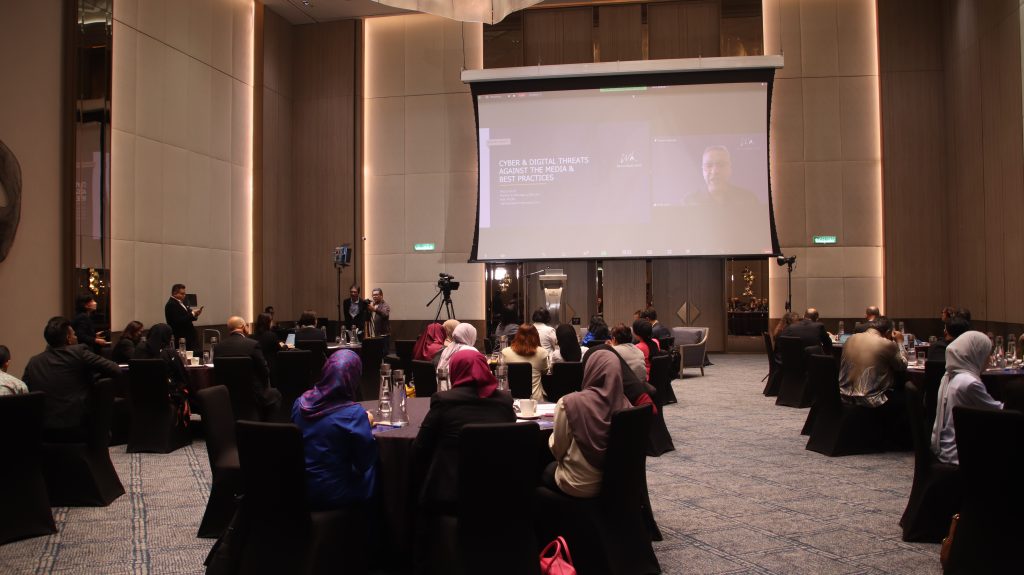
This was later complimented by Mr. Lawrence Chan, the Chief Marketing Officer of BAC Education Group, who brought into focus another demography that is at an impressionable age and is exposed to online content, especially on social media: the youth. He stated that new media is pervasive and gives the power to like or dislike.
Mr. Chan stated that parents need to educate themselves and their children on the incredible amount of information at a user’s disposal on social media and the stringent measures that should be observed to ensure limited risks. Cyberbullying and paedophilia are some of the potential threats to youth.

Senior Lecturer from University Technology, Mara Malaysia, Dr. Suffian Hadi Ayub also echoed this sentiment saying there is a need to create an ecosystem and strike a balance for a holistic society to apply and consume media while ensuring ethical use of information accessed. He went on to break it down further, saying the media is shaping society by creating social intervention mechanisms and finding out where we go from here.

In the broadcast space, Principal Consultant, Radio Broadcasting BMS Technology Consultant Malaysia’s Mr. Bala Murali Subramaney presented an interesting take on the “Future of the Faderless.”
His presentation demonstrated what the transition from traditional mixers and physical faders in radio studios to faderless operations would look like. Mr. Subramaney highlighted that this would make on air delivery more efficient and arguably more cost-effective.
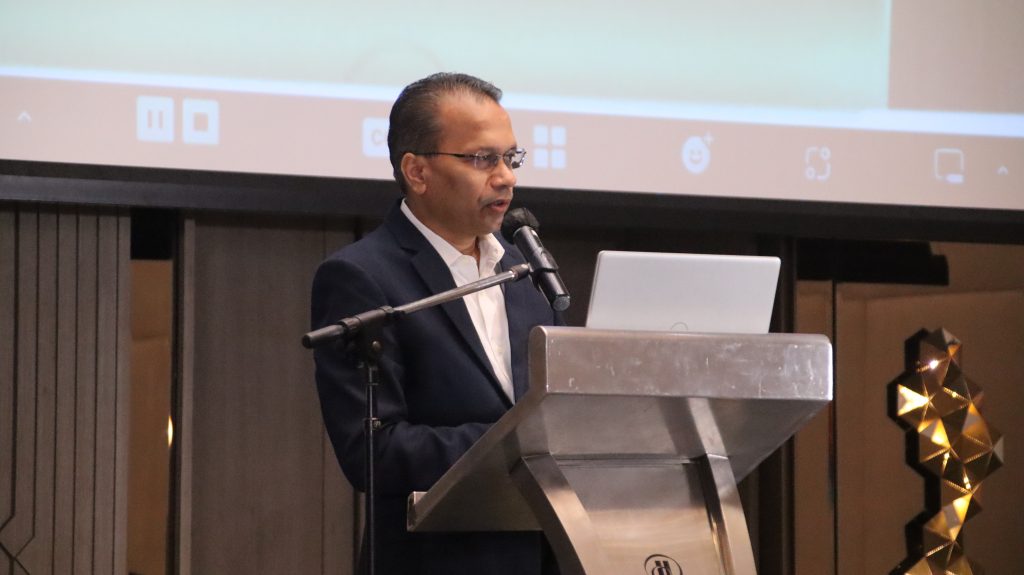
Engineering Consultant from New Zealand, Dr. Amal Punchihewa, reemphasized this, saying new developments complement existing tools as broadcasting is constantly evolving. He also acknowledged that broadcasting for the future will always be challenging, and it needs to be sustainable, address consumer needs, assure access to credible information, and affordable for entertainment while easily accessible for education.
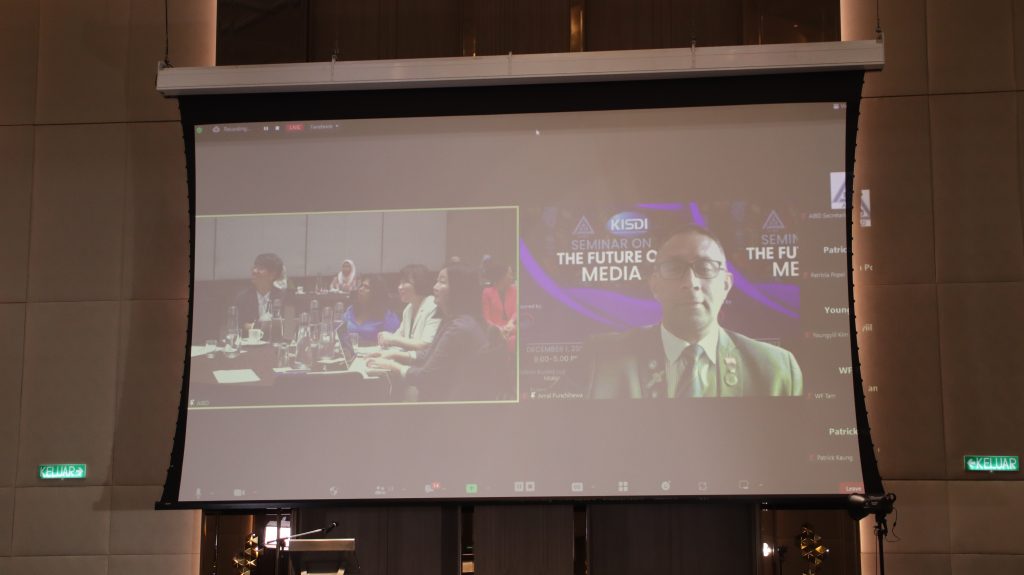
Mr Ravi Ratan Arora, CEO Decisioncraft Incorporated USA, brought into discussion broadcast ratings, a vast topic on its own. Mr Arora outlined three fundamentals for how audience research determines the future; Advertising revenue will remain the backbone of TV business, a measurement system is required to quantify the number of people that view an individual TV advert and a transparent research and analytical system is required to monitor content screening at any given time and the viewership.

AIBD GC President and Director General of Doordarshan India, Mr. Mayank Agrawal, shared another perspective on this, saying they are not in the race for television ratings but are reaching out to people in their dialects.
Shri Agrawal reaffirmed that their (Prasar Bharati’s) role as the public broadcaster for India is to reach out to people with relevant information and also be accurate with it.
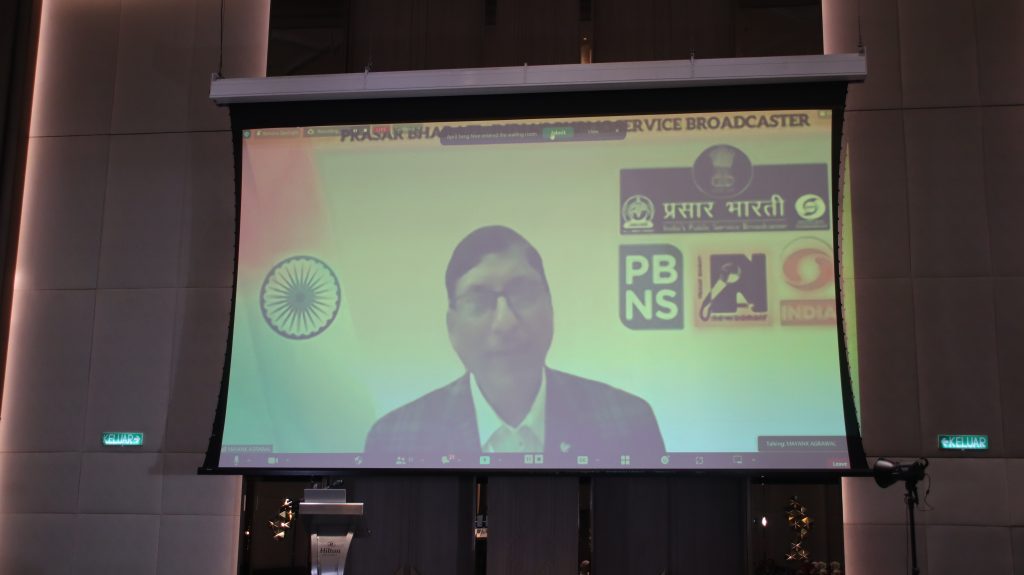
All perspectives shared demonstrated that media is on the right track.
The day came to a close with a Q&A session that prompted more questions, which only goes to show how this subject is ever evolving and is prompting a lot more curiosity, as reflected by the AIBD Director Secretariat’s Ms. Philomena Gnanapragasam in closing.
AIBD/Korea Seminar on Future of Media
On Thursday, December 1, 2022, the Asia-Pacific Institute for Broadcasting
RTB has creative production team despite limited shooting equipment
It was a great pleasure to work with prestige’s organization
Day 3 – KL Health Journalism workshop
The Communications and Multimedia Content Forum of Malaysia (Content Forum)
Day 2 – KL Health Journalism workshop
Media are the “watchdog” for being the ‘eyes” and ‘ears”
Day 1 – KL Health Journalism workshop
The second series of the AIBD/WHO workshop on Health Reporting
Day 2 Workshop on Health Reporting Strategies and Fighting the Infodemic
Collaboration and partnership among all stakeholders was the most important
Day 3- AIBD/WHO workshop on Health Reporting Strategies & Fighting the Infodemic
Journalists in Solomon Islands shared challenges in acquiring information and
AIBD/WHO Workshop on Health Reporting Strategies & Fighting the Infodemic – Day1
Health Journalism has not received the due importance till the
In-country workshop on Investigative Journalism
AIBD collaborated with IPPTAR Malaysia to host an investigative journalism
Thailand helps in narrowing gender gap in Southeast Asia
Thailand has been contributing to the narrowing gender gap in



